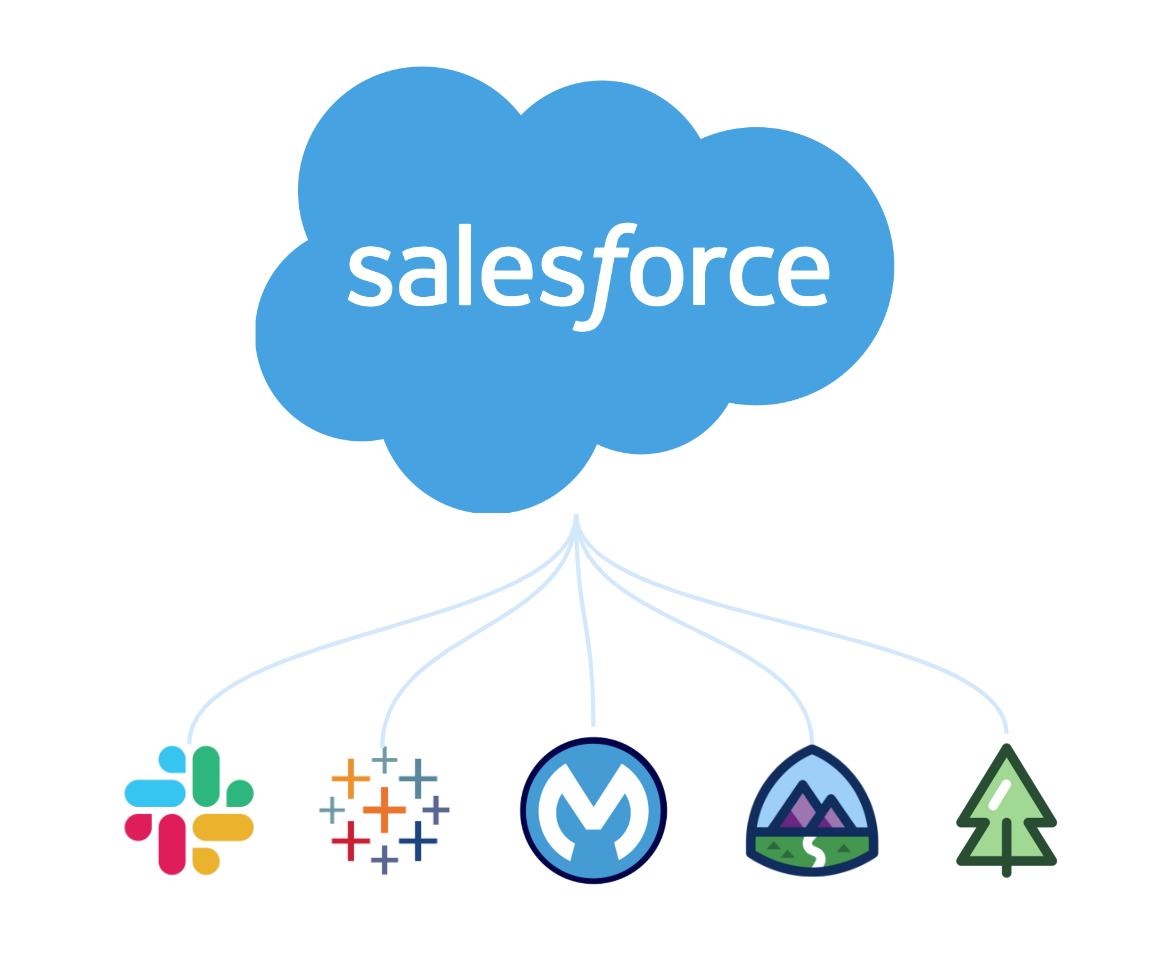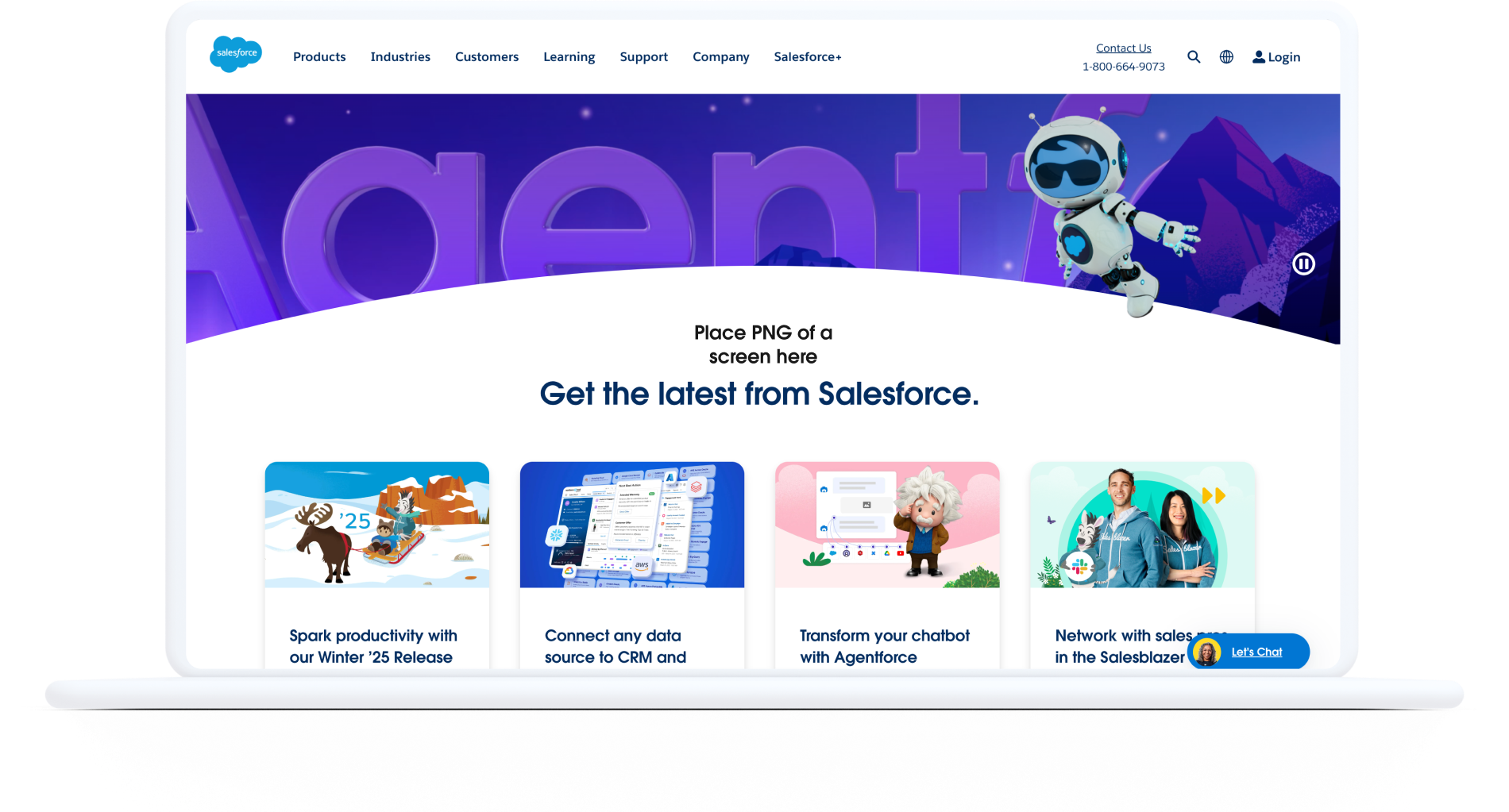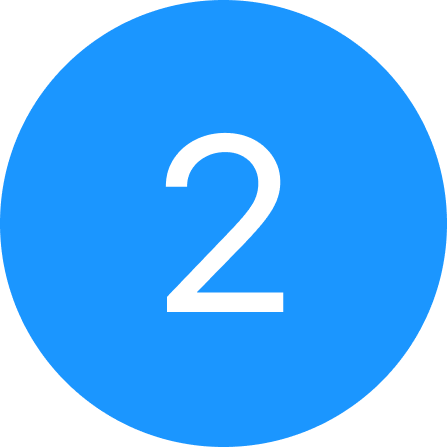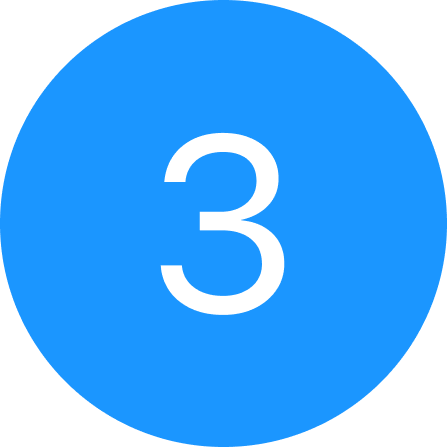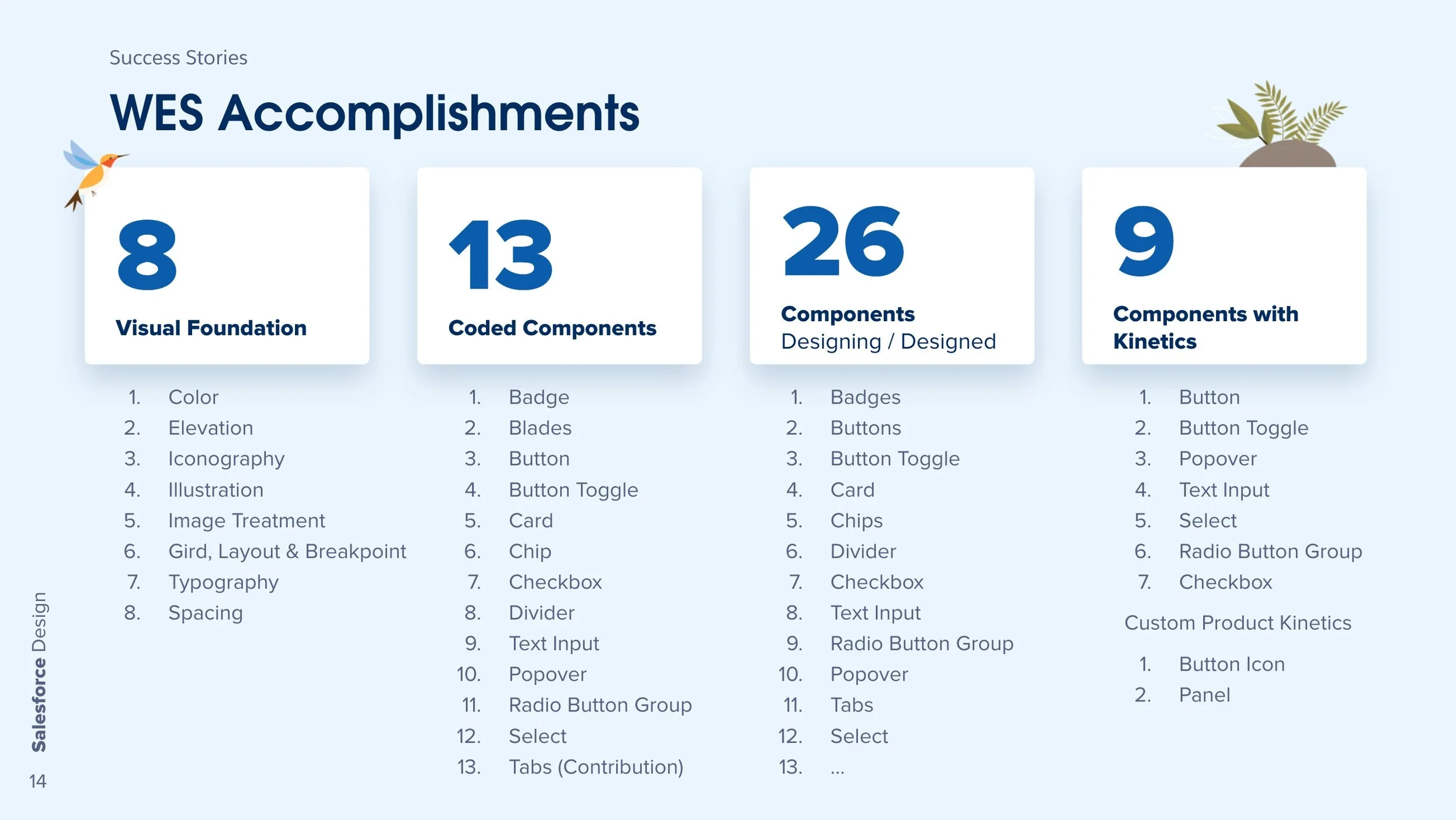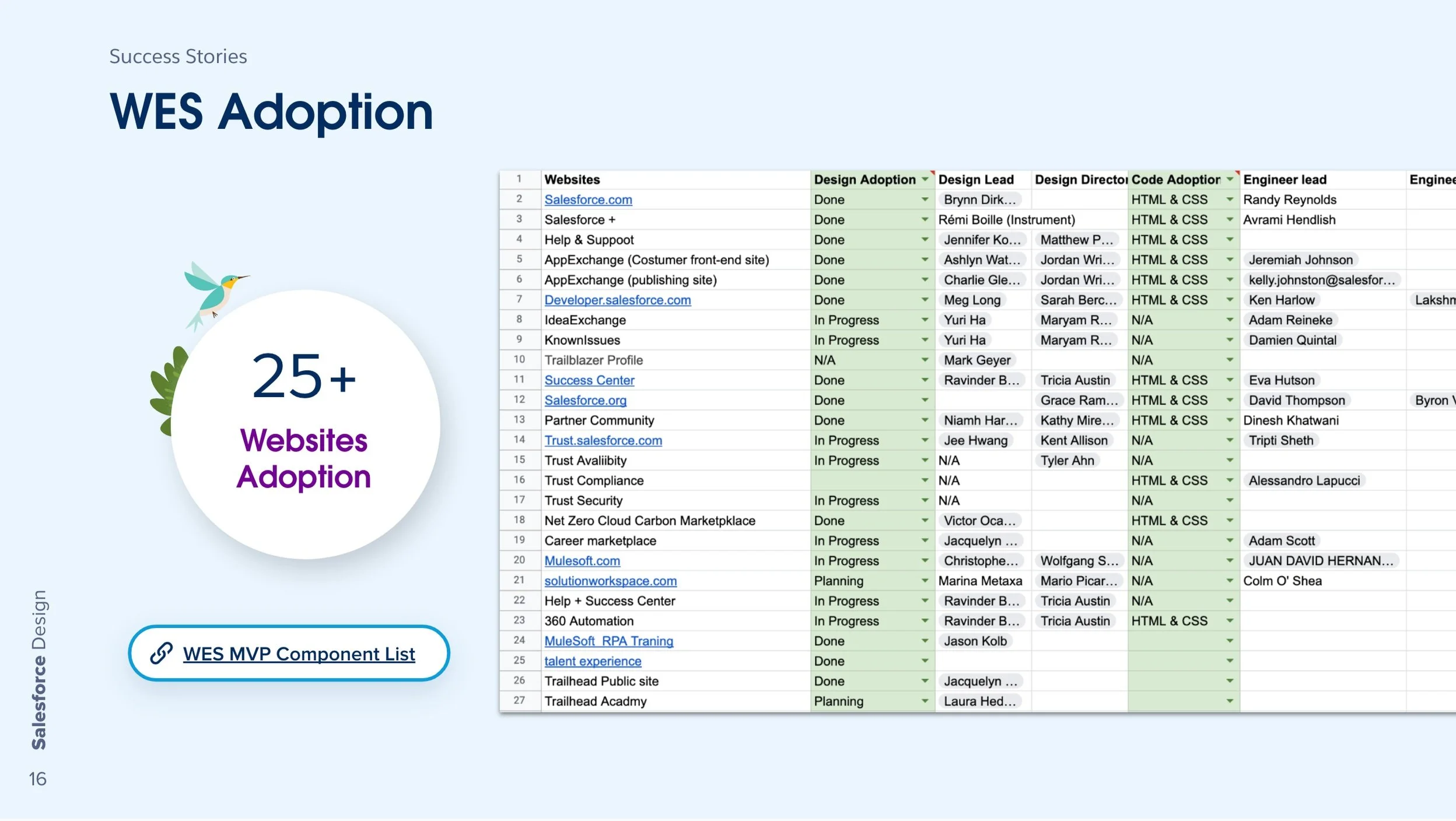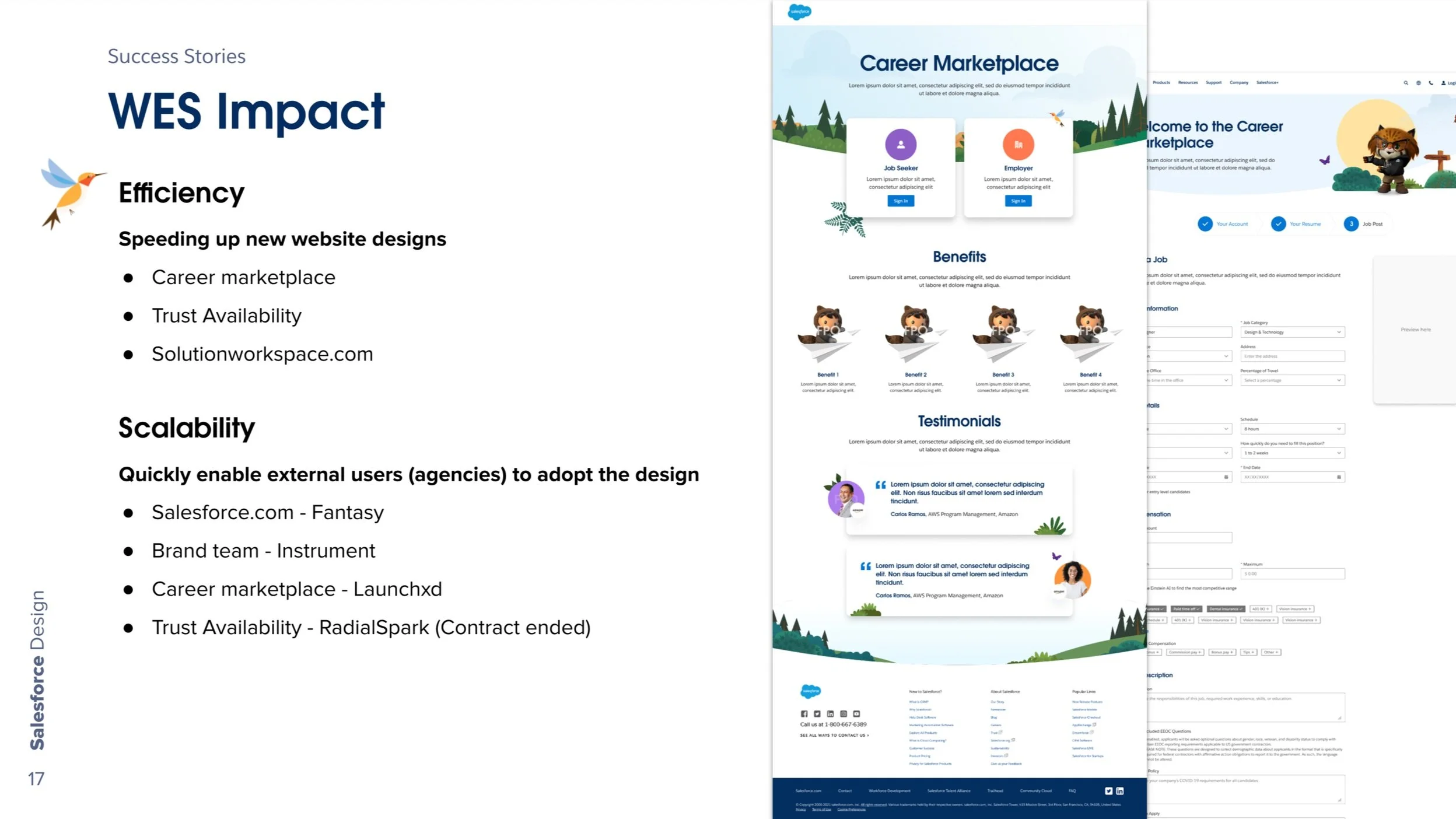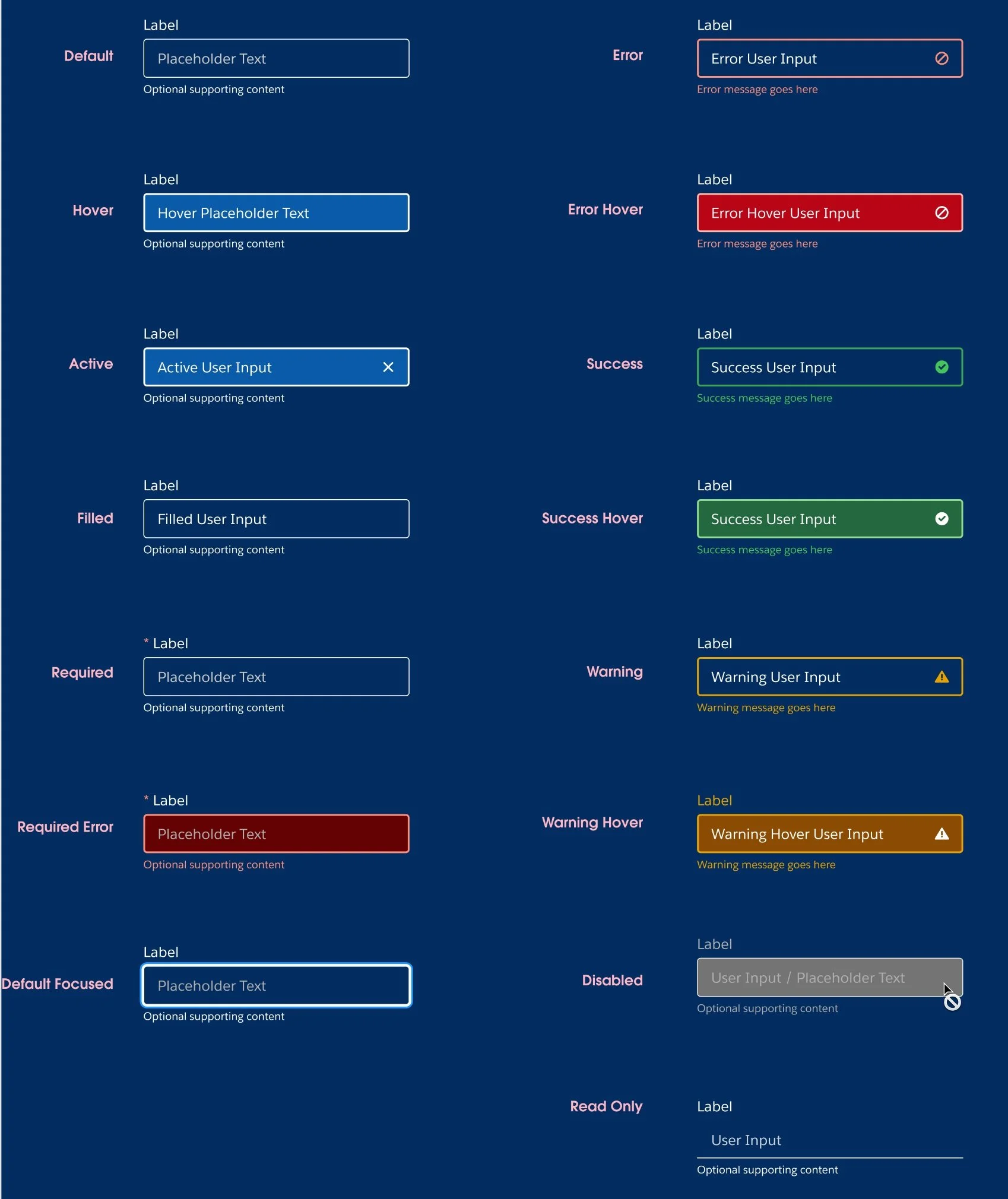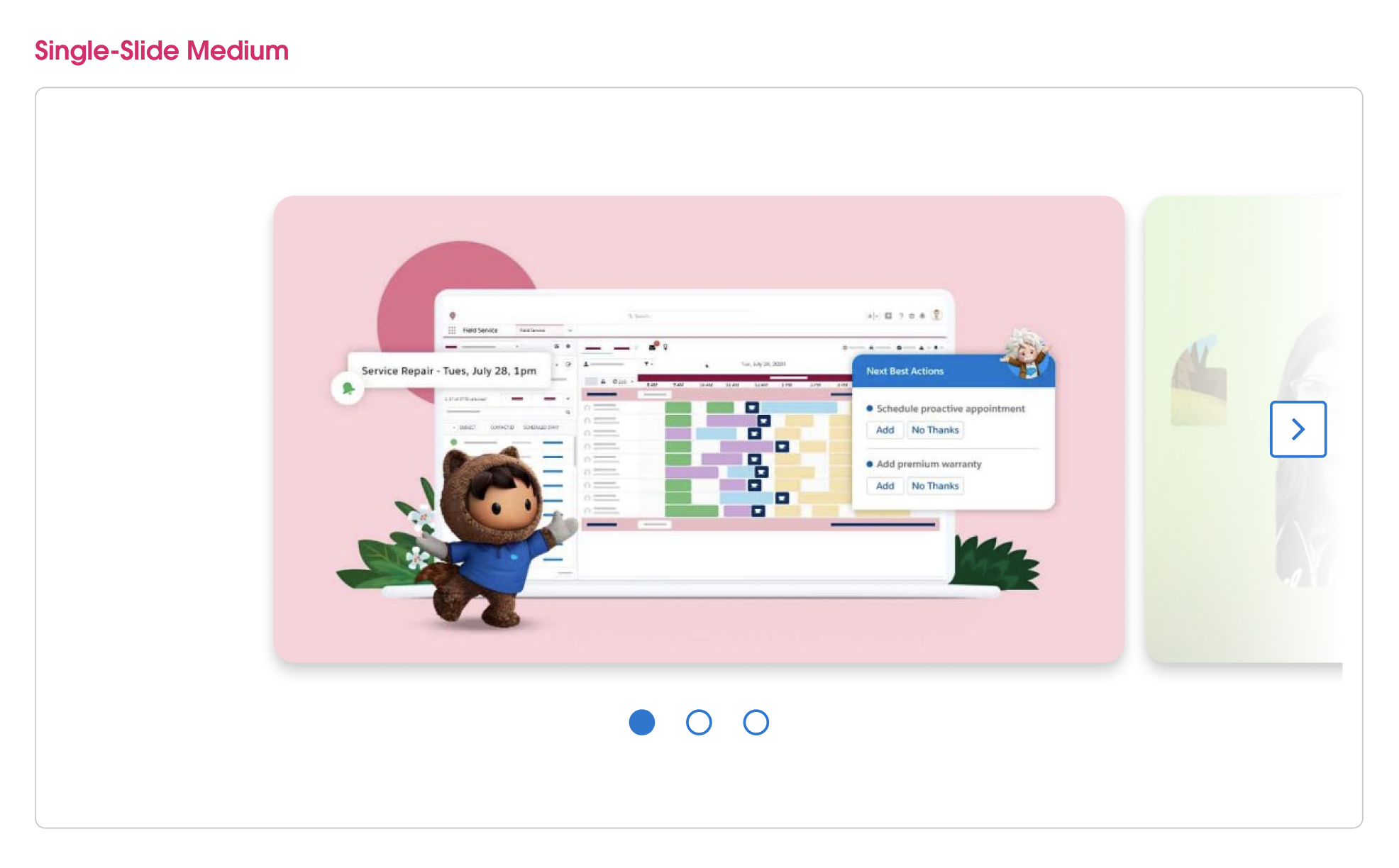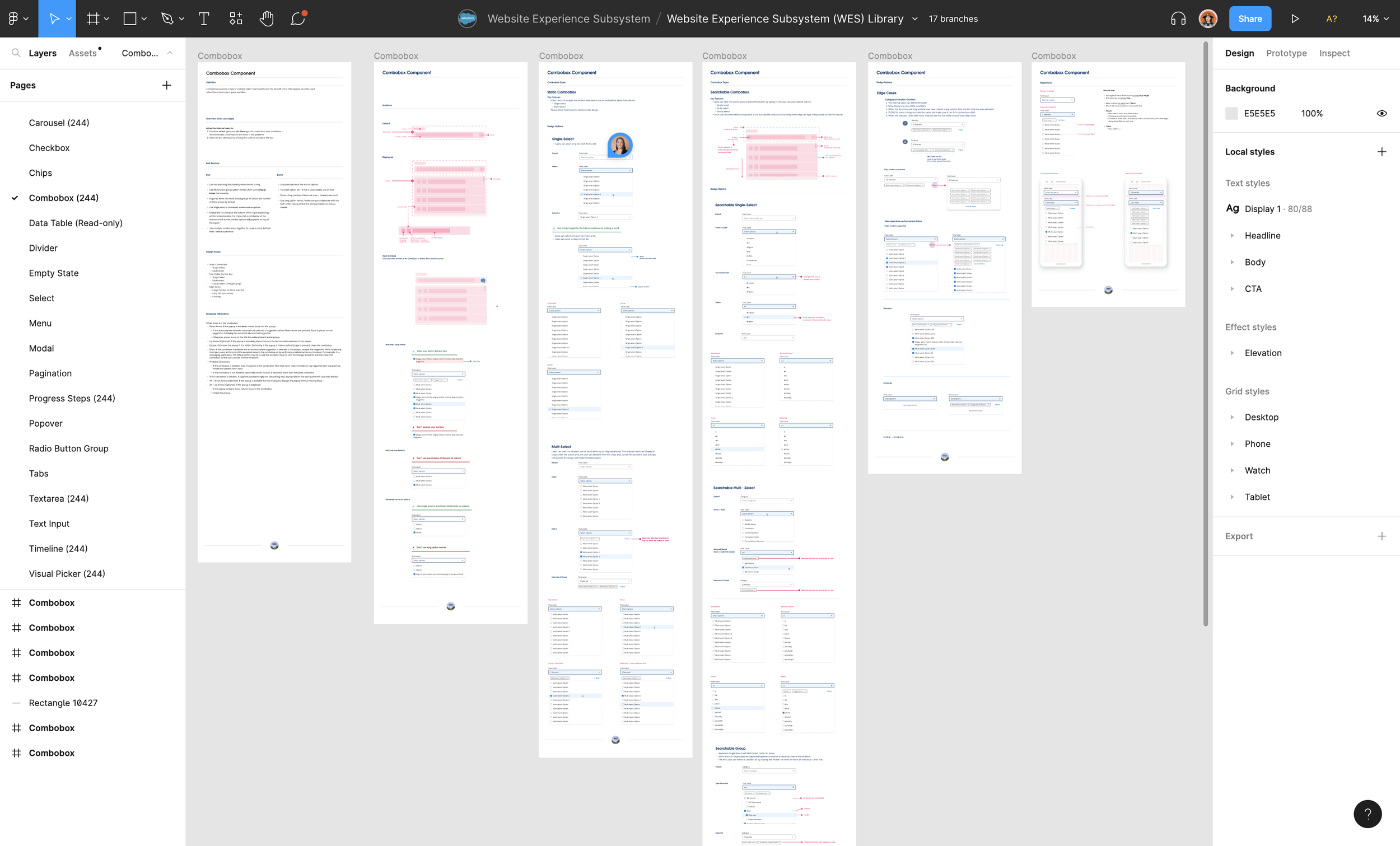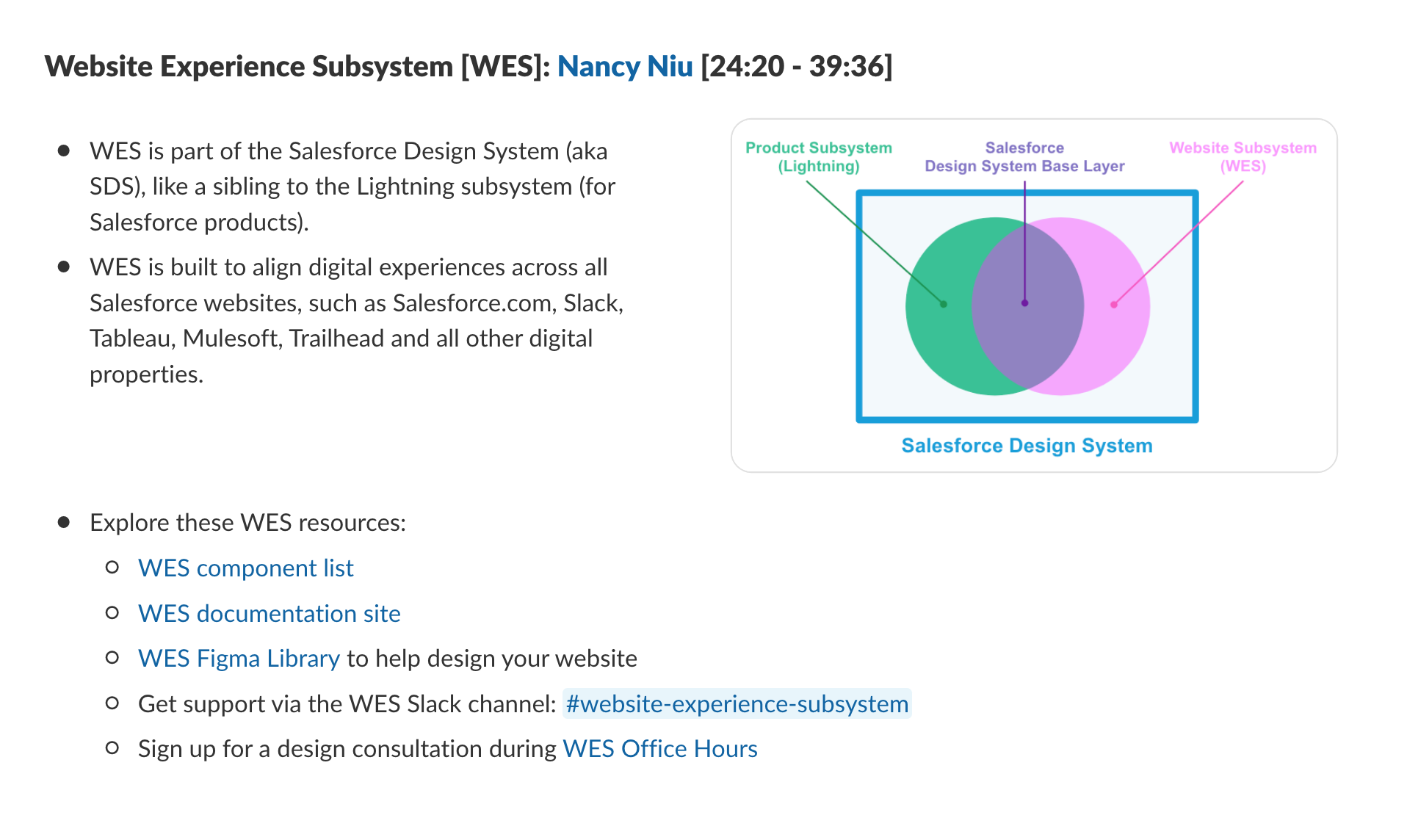Project Overview
WES is a new subsystem within the Salesforce Design System aiming to unify the look and feel across 108 marketing websites (including Salesforce.com, AppExchange, and Developer) and 417,000 pages. This fosters brand recognition and a cohesive user experience, especially as Salesforce integrates acquisitions like MuleSoft and Tableau. Reusable components establish a consistent design language, strengthening Salesforce's visual identity.
Salesforce.com Home Page
My Role
As Design Lead and Product Manager for the WES subsystem, I led design system development, component library creation, and strategic planning. I collaborated with cross-functional teams to ensure WES aligned with One Salesforce objectives, driving adoption and improving the overall user experience.
Skills
Design Systems
Design System Development
Component Library Creation
Visual Foundations
Product
Strategic Planning
Roadmap Creation
Release Planning
Collaboration
Adoption Driving
Leadership
Design Leadership
Stakeholder Management
Decision-Making
Problem-Solving
Design
User Experience (UX)
User Interface (UI)
Information Architecture (IA)
Interaction design
Prototyping
Challenges & Solutions
Limited Staffing:
As the sole designer working on WES, I managed all design-related tasks without additional design support.
Community Involvement:
I implemented a contribution process to involve the community, accelerating the development of components. For more details, check out the WES Design Contribution Model.
Team Disruption:
The development of WES was paused due to shifting priorities, which led to the loss of my entire engineering team.
Focus on Design:
Despite staffing challenges, I continued expanding the component library, with a strong emphasis on driving HTML and CSS adoption.
Low Awareness and Adoption:
Due to insufficient publicity, WES struggled with low awareness and adoption, resulting in limited usage and recognition across teams.
Speaking Engagements:
To increase WES visibility, I took on speaking opportunities internally and externally, while acting as the program manager to promote the system.
Incomplete Code Adoption:
The full integration of Web Components into the WES codebase was not achieved, impacting both functionality and compatibility.
User Research and Solutions:
Through audits and interviews, I found that users were not effectively utilizing web components. Based on feedback, I proposed three solutions:
Deliver new components as an HTML and CSS package.
Accept code contributions from external teams, offering guidance and support.
Encourage the use of Lightning Web Components for future development.
Low Project Profile:
WES did not receive significant attention from the design system team, and with the project manager’s focus shifting elsewhere, the project suffered from a lack of focus and support.
Sharing Success and Managing WES:
Stepping into a project management role, I actively managed WES, highlighting its importance and sharing success stories with leadership to secure ongoing support.
Results & Impact
High Adoption Rate
Spearheaded WES development, achieving an 85% adoption rate as teams embraced its consistent design system.
Widespread Recognition
WES became a well-known subsystem, with multiple teams actively seeking support for adoption and integration.
Accelerated Code Development:
A dedicated team volunteered to assist with delivering HTML and CSS packages, speeding up component adoption.
Ownership and Dedicated Leadership
WES is now fully owned by the Design System team, with a dedicated project manager overseeing its continued growth and success.
Component Examples
These screenshots highlight a selection of component designs, reflecting the collaborative efforts between the contributors and me in their development.
WES Documentation
WES components are thoroughly documented in both the WES Figma Library and the Salesforce Design Systems site, giving internal users easy access to component symbols, design guidelines, and code for seamless integration.
Achievements
Presented “Website Experience Subsystem [WES] “at Salesforce UX Town Hall 03/23


